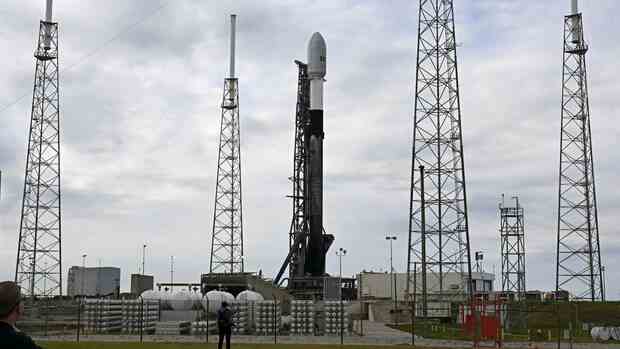Cape Canaveral The race for the best satellite-based Internet is intensifying. The European satellite provider SES launched two new satellites into orbit from the spaceport in Cape Canaveral on Friday. “We bring fast Internet to all places in the world,” said SES boss Steve Collar. The new satellites are the basis for an improved high-performance Internet, which should cover the whole world from the third quarter of next year.
The SpaceX network is available in many countries around the world, including Germany. So far, special antennas have been required to be able to use satellite Internet from Starlink. A next generation of Starlink satellites should make it possible for standard smartphones to use the network.
>> Read also: “Every smartphone can receive reception anywhere in the world”: Elon Musk promises satellite Internet for everyone
Top jobs of the day
Find the best jobs now and
be notified by email.
SES takes a different approach. The SES satellites fly around the earth at a significantly higher altitude. While Starlink’s satellites orbit the Earth in a low-Earth orbit of approximately 500 km to 1,200 km, the SES satellites fly in a medium-Earth orbit in a range of 5,000 km to 20,000 km.
The greater distance to Earth brings a number of advantages, said Manager Michelle Parker from Boeing, who developed the “O3b mPower” satellites, the Handelsblatt. “We achieve high data throughput and low latency,” said Parker. “Six satellites are enough to cover the entire earth,” said Parker, who heads Boeing’s space division.
“Only a few satellites to cover the whole world”
The approach also helps to set up a more sustainable communication system. “We only need a few satellites to cover the whole world, while other systems need thousands,” Parker said. She was alluding to Starlink. Elon Musk’s company already had more than 3,000 satellites in low Earth orbit as of November. In the long term, the company is planning more than 40,000 satellites. Amazon is also planning satellite internet in low-earth orbit with Project Kuiper and is targeting more than 3000 satellites.
In contrast to Starlink and Kuiper, however, significantly larger receivers are required to use the SES system. One customer for this are cruise ships. “We’re getting gigabit speed on the high seas,” said John Padgett, president of cruise line Princess Cruises. Starlink also offers solutions for ships. But SES’s system currently has better coverage anywhere in the world. And with the upgrade to the improved satellites, data throughput should improve.
Other customers include the software group Microsoft, which secures its global cloud infrastructure with SES. Through the satellite links, Microsoft ensures a direct connection between large data centers anywhere in the world. While the servers are also connected with underseal cables, SES provides “resilience,” said William Chappell, Microsoft’s vice president of Azure Global.
governments as customers
In the long term, around half of the customers will not be companies, but governments, expected SES boss Collar. “With us, customers get a reliable connection like fiber optic Internet and almost full control over the network.”
One of the first customers is the island state of Cook Islands in the South Pacific. The undersea cables of the neighboring island nation of Tonga had been cut twice. Once by a ship anchor and once by a volcanic eruption. “SES ensures we have a reliable alternative,” said Phillip Henderson, who runs the Cook Islands network operator Vodafone.
However, unlike wired broadband connections, SES and Starlink have significant bandwidth limitations. With the first generation of the satellite network, it was possible to supply the 50 largest cruise ships in the world. “Now we’re increasing everything by a factor of 10,” said SES boss Collar. Customers then get download speeds of up to 10 gigabits – but only if the conditions are optimal.
>> Also interesting: How rocket engineer Bulent Altan wants to bring fast internet to the world
Starlink is already suffering from falling download rates. The more people access the satellites at the same time, the lower the data throughput. According to calculations by the analysis company Ookla, the average download rate with Starlink fell by 17 percent in the comparison from the second to the third quarter of this year in the USA. On average, users reached 50 megabits per second there.
Ookla suspected that the falling data throughput was related to the great popularity of Starlink: “Over the past year, more and more users have signed up for Starlink – in the second quarter of 2022 400,000 users were reached worldwide – and the speeds have decreased.”
More: War of the Satellites – Private satellite projects such as Starlink are the focus of the military.
